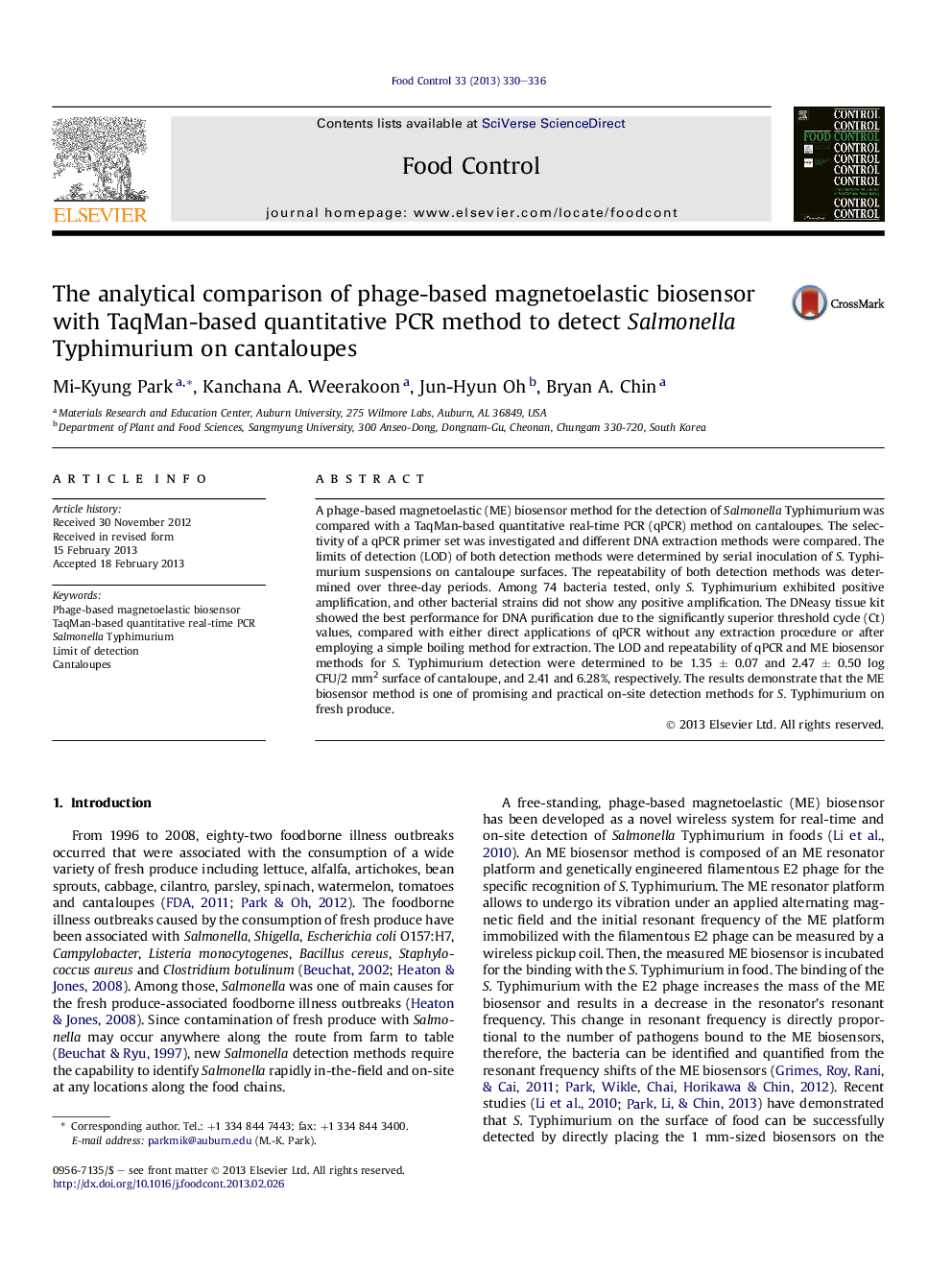| Article ID | Journal | Published Year | Pages | File Type |
|---|---|---|---|---|
| 6392844 | Food Control | 2013 | 7 Pages |
A phage-based magnetoelastic (ME) biosensor method for the detection of Salmonella Typhimurium was compared with a TaqMan-based quantitative real-time PCR (qPCR) method on cantaloupes. The selectivity of a qPCR primer set was investigated and different DNA extraction methods were compared. The limits of detection (LOD) of both detection methods were determined by serial inoculation of S. Typhimurium suspensions on cantaloupe surfaces. The repeatability of both detection methods was determined over three-day periods. Among 74 bacteria tested, only S. Typhimurium exhibited positive amplification, and other bacterial strains did not show any positive amplification. The DNeasy tissue kit showed the best performance for DNA purification due to the significantly superior threshold cycle (Ct) values, compared with either direct applications of qPCR without any extraction procedure or after employing a simple boiling method for extraction. The LOD and repeatability of qPCR and ME biosensor methods for S. Typhimurium detection were determined to be 1.35 ± 0.07 and 2.47 ± 0.50 log CFU/2 mm2 surface of cantaloupe, and 2.41 and 6.28%, respectively. The results demonstrate that the ME biosensor method is one of promising and practical on-site detection methods for S. Typhimurium on fresh produce.
⺠qPCR primers showed the selectivity against only S. Typhimurium. ⺠The LOD of the ME biosensor method exhibited one log greater than that of qPCR. ⺠The repeatability of the ME biosensor method was within acceptable limits. ⺠This study showed the advantages of ME biosensors as an on-site method.
